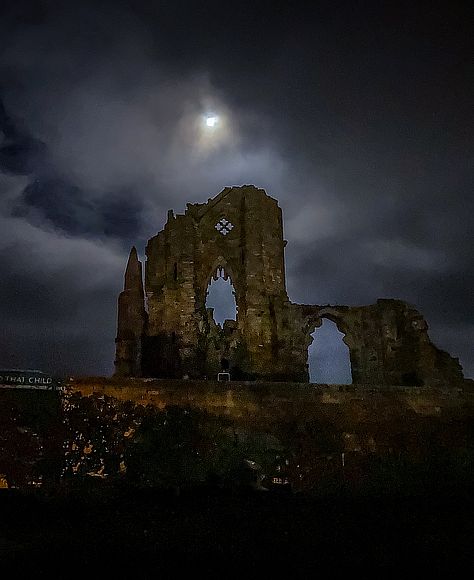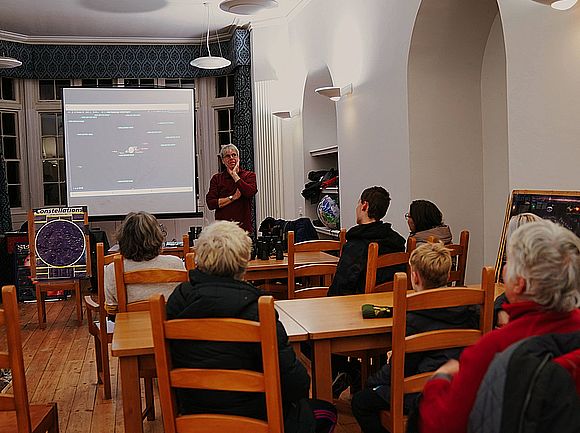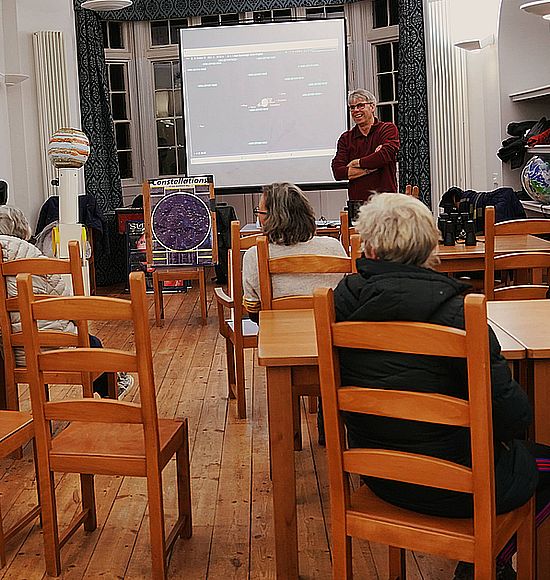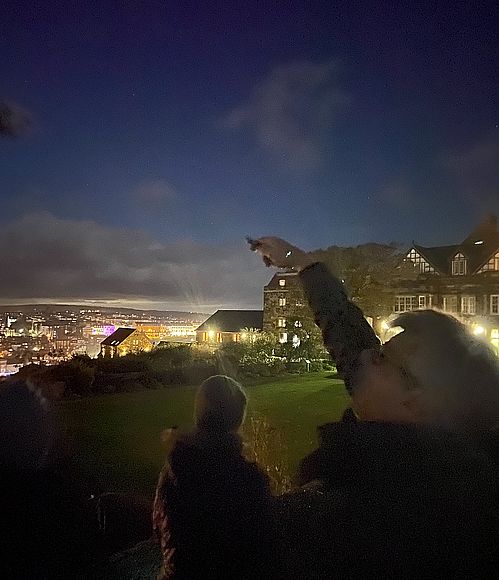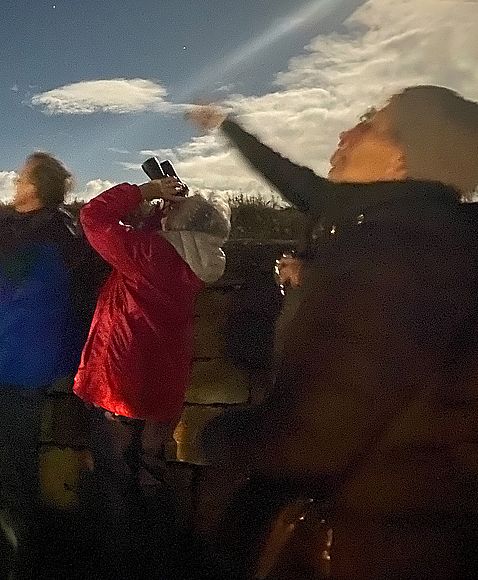In some respects, this event was like the one hosted in February 2023, in that the forecast conditions - seemingly adverse for viewing, were nowhere near as bad as forecast. With the forecast in mind however, Mark had loaded just the two scopes - the 150mm (6") Dobsonian and the Helios 100mm (4") refractor, alongside the required IT gear and other items necessary for the indoor presentation. After picking up Keith, we met Richard Randle at the Whitby Youth Hostel in good time to direct us into our allotted car space.
Once inside, we were met in the foyer by Glynnis from the WYH, who showed us to the events room where we began the process of setting up, decking out and preparing for the start of the event at 7:30pm. Only then did Mark realise he'd left the eyepiece case at home - Doh!! At that time skies were predominately cloudy, and with an indoor presentation planned followed by walk outside - pointing out stuff behind clouds, this seemed of little concern (or so we thought). John L arrived, having walked up from town bearing news of cloud breaks, but sadly no eyepieces...Mark's telepathic projection had failed! We carried on!
Whitby Abbey illuminated by a Halloween Moon only,
and not the colourful lighting illuminations seen the week before.
Image - Richard Randle. (Click for larger)
With everything ready Glynnis ushered in those attending the event from the cafe area, numbering under 20 people, half as many as February, but given the weather forecast, soggy underfoot conditions and absence of spooky lighting illuminations due to waterlogged cable points, this was to be expected. Following a brief introduction by Glynnis, Mark showed what the autumn sky outside should look like utilising the planetarium apps. Eager to view the cloud, after half an hour we decided to try our luck and ventured out into the WYH garden to see just what was visible. Cloud probably!
Mark ruefully explaining why he should be shot at dawn. (Click for larger image)
Image - Keith Deason
Relieved to be reprieved, Mark jokes with the audience. (Click for larger image)
Image - Keith Deason
Surprisingly, (alarmingly so to Mark - who, remember, had forgot the eyepieces!) skies were clearing sufficiently to allow a laser pointer tour of stars and constellations visible to be conducted. The Moon was just a few days after full, and moonlight did drown out fainter stars, but Jupiter and Saturn were both visible for periods of time (rubbing salt into Mark's wounded pride). Moving around the garden, Mark touched on many aspects of astronomy, observing, and stellar evolution - tying in these to relevant stars as and when they became visible. Having circuited the upper part of the garden - spotting a couple of meteors we headed back indoors for a final pictorial presentation of the various types of objects astronomers observe.
Mark points out the 'Summer triangle' high above the town.
(Click for larger image) Image - Richard Randle
Questions and answers followed, as the meteorite collection was passed around before eventually it was time to call a halt to proceedings (9:30pm). Given that no observations through an eyepiece had been carried out, people were nevertheless thrilled with the evening, perhaps thankful that clouded skies had broken sufficiently to allow an outdoor astro-ramble. If only Mark had remembered those darn eyepieces!
- Log in to post comments

